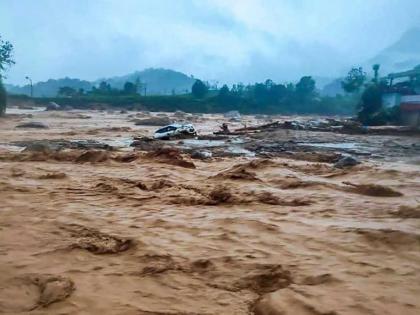Wayanad Landslides Triggered by 10% Heavier Rainfall Due to Climate Change, Study Finds
By Lokmat English Desk | Updated: August 14, 2024 08:01 IST2024-08-14T08:01:22+5:302024-08-14T08:01:28+5:30
A new rapid attribution study by a global team of scientists has revealed that the deadly landslides in Kerala's ...

Wayanad Landslides Triggered by 10% Heavier Rainfall Due to Climate Change, Study Finds
A new rapid attribution study by a global team of scientists has revealed that the deadly landslides in Kerala's ecologically sensitive Wayanad district were triggered by an intense rainfall event, which was exacerbated by climate change, making it 10 percent heavier than usual.
Researchers from India, Sweden, the US, and the UK have cautioned that similar events are likely to become more frequent as global temperatures rise. To assess the impact of human-induced climate change, scientists from the World Weather Attribution (WWA) group analyzed high-resolution climate models that accurately depict rainfall patterns in the relatively small study area.
The models revealed that climate change has already intensified rainfall by 10 percent. They also project an additional 4 percent increase in rainfall intensity if the average global temperature rises by two degrees Celsius compared to pre-industrial levels (1850-1900).
The scientists, however, said there is a "high level of uncertainty" in the model results as the study area is small and mountainous with complex rainfall-climate dynamics. Having said that, the increase in heavy one-day rainfall events aligns with a growing body of scientific evidence on extreme rainfall in a warming world, including in India, and the understanding that a warmer atmosphere holds more moisture, leading to heavier downpours.
Scientists explain that for every one-degree Celsius rise in global temperature, the atmosphere’s capacity to hold moisture increases by approximately 7 percent. With the Earth's surface temperature already rising by about 1.3 degrees Celsius due to escalating greenhouse gas concentrations, particularly carbon dioxide and methane, extreme weather events such as droughts, heat waves, and floods are becoming more severe globally.
WWA scientists noted that while the exact relationship between land cover, land use changes, and landslide risk in Wayanad remains unclear from current studies, factors such as quarrying for building materials and a 62 percent reduction in forest cover may have heightened the area's vulnerability to landslides during intense rainfall.
S Abhilash, the director of the Advanced Centre for Atmospheric Radar Research at Cochin University of Science and Technology (CUSAT), had earlier told PTI that the warming of the Arabian Sea is leading to the formation of deep cloud systems, resulting in extremely heavy rainfall in Kerala in a short period and increasing the risk of landslides. "Our research found that the southeast Arabian Sea is becoming warmer, causing the atmosphere above Kerala to become thermodynamically unstable. This instability is allowing the formation of deep clouds," he had said.